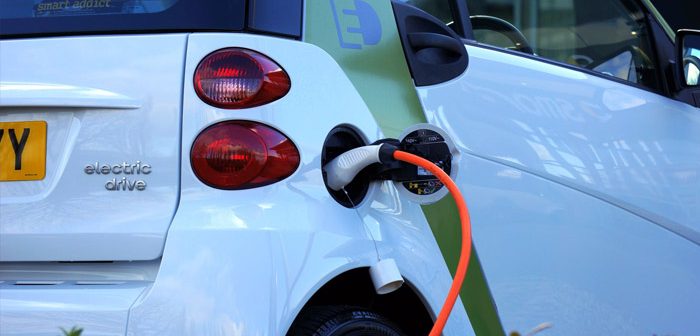(Photo | Pexels)
Electric vehicles are flooding the market and virtually every major automaker is committing most, if not all, its future vehicles to be all-electric or hybrid. What’s the reality of owning one today and what does the future look like?
The Road to Electric
Contrary to popular belief, electric vehicles have been around since the early 1800’s. The first true commercially available “electric buggy” came to market in 1832. By 1912, about a third of all vehicles on the road were electric. Then Henry Ford introduced the gas-powered Model-T at a price point no one could resist, and the electric vehicle market disappeared by 1935.
Baby Boomers remember the late 60s and early 70s, when gas prices soared from 35 cents per gallon to $1.25 or more and long lines of cars at every gas station, hoping to grab a tank of gas before the pumps ran dry. Interest in alternative vehicles soared, especially electric.
However, the required battery technology and efficient electric motors were over a decade away. Ranges were limited to 50 to 60 miles on a charge and no publicly accessible charging stations existed at scale. By the late 70s, interest waned and hence investment in the technology.
A resurgence in interest hit the market in the mid-90s thanks to new federal and state regulations and R&D investments and incentives. Public concerns over air pollution and gas prices encouraged General Motors to produce the first mass-market hybrid car, the EV1, in 1997. Shortly after, Toyota’s Prius hybrid is introduced to the U.S. in 2000.
The Good… And the Brave
The EV Leader
Fast-forward to 2006, and Elon Musk spins up a startup called Tesla Motors. He announces his goal to produce a revolutionary sports car with over 200+ mile range and performance which challenges the likes of luxury cars such as Porsche and Lamborghini.
Critics scoff, especially Ford, GM and other major automakers. How could a tech guy with no automotive experience create a mass-market electric vehicle (“EV”) and create the necessary infrastructure to build them, let alone support them?
Today, Tesla is worth more than Ford and GM combined. Tesla is producing over 100,000 cars per quarter, and just opened a new factory in China, which Tesla expects to produce an additional 60,000+ per quarter. They also announced a German factory that will go online in 2021 with a total capacity eventually reaching 125,000 cars per quarter.
Tesla’s Model 3 has a standard range of over 240 miles with an upgrade that pushes it to 310 miles. Prices range from $35,000 to $48,000, making it one of the most affordable EVs on the market.
The EV Followers
Today BMW, Nissan, Jaguar, Hyundai, Audi, Chevy, Renault, Ford, Mitsubishi, Kia, Porsche and Mini Cooper have EVs for sale.
Toyota and VW are currently the two largest automakers. Toyota announced they will be selling over ten “electrified” (i.e. counting hybrids as well) models by end of 2020. VW says it will be producing 50 fully electric models by 2025.
Ford announced the death of sedans (except the Mustang) in the U.S., focusing on trucks and SUVs. It’s EV sales are anemic and it seems Ford is counting on foreign markets and gas vehicles to survive the EV tsunami. Ford said it will offer 40 “electrified” models by 2025, mostly in China and other countries. Ford did announce plans at the 2019 Detroit Auto Show to bring to market a fully electric F-150 pickup truck by 2021. This would be a gamechanger, as this iconic auto is the cornerstone of Ford’s U.S. business and profit. Ford did announce the Mustang Mach-E, an all-electric model, in November 2019 that will be in showrooms in summer 2021.
GM’s EV sales plummeted thanks to Tesla’s stylish and technically superior offerings. GM’s EV model announcements focus on foreign markets much like Ford. It will offer 10 EV models this year and ten more by 2023, but both are aimed at the Chinese market, not the U.S.. GM announced in January 2019 that Chrysler will be its banner EV brand but has not committed to all-electric line to date.
EV Game-Changing Features
EVs are attractive for several reasons:
- Power Source — EVs get their energy from our power grid, which costs roughly ten cents per kilowatt-hour (kWh) here in Oregon.
o Benefit: power is cheaper than gas, anywhere from 50 percent to 75 percent cheaper. Tesla Model 3, the most popular all-electric on the road in the USA, uses 27 kWh per 100 miles. Here’s a cost comparison to gas: if we drive a Tesla Model 3 and a gas-powered car (let’s use 25 mpg) for 100 miles, Tesla will cost about (27 kWh per 100 miles) x ($0.10/kWh) = $2.70 per 100 miles. The gas-powered car costs (100 miles/25 mpg) x ($2.60 per gal) = $10.40 per 100 miles. The Tesla’s “fuel” cost is almost a quarter of a gas-powered car.
o Benefit: Using EV’s with centralized power sources has several advantages besides lower operating cost.
- It dramatically reduces air pollution caused by engine exhaust.
- EV’s have no gas-spills at gas stations.
- Centralized power for EV’s can be seamlessly swapped to more green and efficient providers such as solar, wind and hydro power sources without any effect to the vehicle or the charging stations.
- Maintenance — An EV has essentially one moving part, the motor, whereas a gasoline-powered engine has over 200 moving parts. Fewer moving parts equals less maintenance and more reliability. EV drivetrains have 20 moving parts compared to over 2,000 for a gas car. Thanks to low maintenance and substantially less parts, EVs are expected to outlive gas-powered cars by quite a bit, providing a better return on investment.
- Evolution/Upgrade — EV’s such as Tesla’s line have another advantage. With essentially two key components, the rotor and the battery, and everything run by software, improvements in performance can be downloaded. Tesla owners have seen improvements in range and functionality from periodic updates to their EV’s software. Batteries will eventually need to be replaced, but the price for one is dropping rapidly as battery production volumes increase and technology advances increase their efficiency and lower their cost. For example, in 2016, researchers at the University of California, Irvine announced the invention of nanowire-based battery material that can be recharged over hundreds of thousands of times. Current batteries have a limit of around 500 cycles before they die. This new technology means a battery could last forever without losing charge capacity.
- More Room — with very little room required for the compact electric motor and battery, designers can build smaller cars with more passenger and storage space.
- More Stable — The battery pack weighs in from 850 to 1,200 pounds and is typically installed below the passenger compartment, which lowers the center-of-gravity for the car. This makes for a highly stable vehicle.
- Safety — Tesla’s Model 3 is the safest car ever tested by the National Highway Traffic Safety Administration (NHTSA). The Tesla Model 3 has the lowest probability of injury in a collision of any of the over 900 cars NHTSA has tested.
- Auto-Pilot — This suite of features is safer than the news headlines imply. The average accident rate for all passenger cars is one in every 436,000 miles driven. Tesla’s autopilot had one accident per 2.7 million miles! Many people confuse auto-pilot with fully autonomous. Auto-pilot is a subset of features required for fully autonomous autos. For example, auto-braking when a potential collision is detected or notifying the driver they’ve crossed over the centerline.
The Bad… And the Hype
Range — Range has always been one of the biggest issues with EV’s, which limited its use to short commutes. Today, Tesla’s line of EVs lead the pack with a top range up to 325 to 348 miles depending on the model, which make them a viable substitute for most travel scenarios. For comparison, a standard gas-powered car with a full tank of gas (around 15 gallons) with a fuel efficiency of 25 miles per gallon can take you 375 miles between fill-ups. Most other EV auto brands range from 120- to 240-mile range.
Charging — An advantage with gas-powered autos is the huge network of 168,000 gas stations, although that number has been decreasing every year for the last ten years. EVs require a charging station and time to charge up. As of mid-2019, there are over 70,000 charging stations in the U.S. with about 11,000 fast-charging units. That’s nearly 50 percent more than in 2017 and the current rate of expansion is tremendous. The time to charge varies greatly depending on the battery and whether fast, rapid or standard chargers are used. Standard charging for a typical empty battery can take four to 11 hours while fast-chargers typically take under four hours. Rapid chargers are even faster and can take just 20 to 30 minutes to add 60 to 200 miles. AAA and other services in many states now carry portable generators to give stranded motorists enough charge to make it to a charging station.
Cost — Until the appearance of lower cost EV’s like Tesla’s Model 3, cost was a big factor with owners paying a premium for the privilege. The good news is cost will continue to decline as more EVs are produced and technology lowers the cost of the two key components, the electric motor and the battery.
Fully Autonomous Vehicles — Now for the hype. We’ve been told for years that fully autonomous cars are just around the corner. Although we’re closer than ever, it will most likely be eight to ten years before the technology matures and federal, state and local governments allow them to hit the roads.
Towing Capacity — The range of both gas-powered and electric vehicles degrade when towing trailers, especially heavy loads like travel trailers and toy haulers, but EVs are more adversely affected. For example, the Tesla Model X SUV can lose 45-75 percent of its 295-mile range hauling a 5,000 pound trailer depending on road conditions (ex. flat vs. hills).
The Ugly… And the Innovative
SEVEN of the top ten best-selling autos in the USA are pickups or SUVs. There have been no EV offerings capable enough to challenge them, until now. Tesla introduced the first mass-produced EV pickup in November 2019, the $60,000 Cybertruck with a range of 250–500 miles. This angular pickup is a dramatic departure from the ubiquitous styling of the Ford F150, Dodge Ram and Chevy Silverado. Some call it ugly, others futuristic. Either way, it’s the first salvo which will disrupt the market and will start delivering them in late 2021. Over 250,000 Cybertrucks worth north of $10 billion were pre-ordered by the end of 2019.
Another EV pickup announced in 2018 is the Rivian — a more iterative change from current designs — which received a $500 million investment from Ford and $750 million from Amazon. Rivian’s ability to build factories and scale production as Tesla did is yet to be proven.
Bottom Line — Buy Electric or Burn Petrol?
If your lifestyle calls for a pickup or SUV, you may want to wait a year or so, unless you don’t mind the unique styling of Tesla’s Cybertruck. For those of you living in remote parts of the country on farms and ranches and haul heavy equipment, reduced range is an issue. Stick to hybrid pickups and SUVs like the hybrid version of the full-size F-150 Ford recently announced.
Otherwise, there’s no longer any reason to wait. I’m a fan of Tesla’s Model 3 sedan, but there’s plenty of options out there now with ranges that are comparable to gas-powered autos and plenty of charge stations around to make a round-trip to Portland a no-brainer.
Next Month’s Column: Smart Homes — Dive In or Avoid Like the Plague
As a guy who likes to walk-his-talk, I dove into smart-home tech five years ago… and I’m still married. “Argh! Preston, I just want to turn on the lights!” was heard a lot in our house. Yes, it’s cool and often handy, but smart homes have a way to go for the average family. We’ll take a look at what works, what doesn’t and what requires a degree from MIT to manage.
Find Out More
bit.ly/Forbes-7-Reasons-ICE-Will-Die; zd.net/Batteries-that-never-die; bit.ly/Tesla-Safest-Car; ford.to/Rivian-Ford-Investment; bit.ly/Rivian-Ford-Amazon
Preston Callicott is CEO of Five Talent Software, Inc. based in Bend. His hope is writing articles such as this one will allow his mind to stop waking him up at 4am with “aha’s” and “oh-my’s” about the massive impact tech has on our collective future.






2 Comments
This article was informative, light hearted and timely.
This article was informative, light hearted and timely. Also technically correct. Bravo.